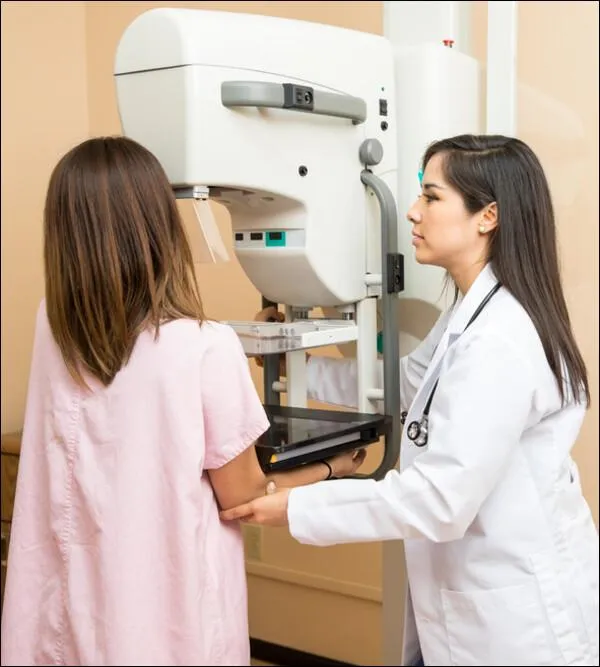| Previous
Page |
PCLinuxOS
Magazine |
PCLinuxOS |
Article List |
Disclaimer |
Next Page |
October Is Breast Cancer Awareness Month |
by Paul Arnote (parnote)
 Breast cancer is an insidious disease that afflicts people from all walks of life, all lifestyles, and across all socioeconomic groups. Women make up the overwhelming majority of breast cancer diagnoses, but men can also get breast cancer. The rate of breast cancer in men, however, is less than 1% of that of women. Since October is Breast Cancer Awareness month, let's take a look at some statistics about breast cancer. These statistics come from the Susan G. Komen foundation, a leader among leaders in the fight against breast cancer. Please visit their “Breast Cancer Statistics” page to view all of the information available. Overall Estimates of Breast Cancer in the U.S.: In 2024, it's estimated among women in the U.S. there will be 310,720 new cases of invasive breast cancer (This includes new cases of primary breast cancer, but not breast cancer recurrences.), 56,500 new cases of ductal carcinoma in situ (DCIS), a non-invasive breast cancer, and 42,250 breast cancer deaths. In 2024, it's estimated among men in the U.S. there will be 2,790 new cases of invasive breast cancer (This includes new cases of primary breast cancers, but not breast cancer recurrences.), and 530 breast cancer deaths.  Time Trends of Breast Cancer Rates in the U.S.: In the 1980s and 1990s, the rate of breast cancer incidence rose, largely due to increased breast cancer screening with mammography. The rate of breast cancer incidence declined in the early 2000s. This decline appears to be related to the drop in menopausal hormone therapy use after it was shown to increase the risk of breast cancer. Mammography screening rates also fell somewhat in the early 2000s. However, studies show the decline in the rate of breast cancer incidence during this time was not likely due to the decline in screening rates. Since about 2005, breast cancer incidence rates have increased slightly (by less than 1% per year). This may be due, in part, to an increase in body weight and a decline in the number of births among women in the U.S. over time. Trends in incidence rates of breast cancer may be different among some groups of women. Breast cancer mortality rates over time: From 1989 to 2022 (most recent data available), the breast cancer mortality rate in U.S. women decreased by 44% due to improved breast cancer treatment and early detection. Since 1989, about 490,500 breast cancer deaths in U.S. women have been avoided. The breast cancer mortality rate in women decreased by about 1.5% per year from 2018 to 2022. Different breast cancer mortality rate trends may have been seen in some groups of women. Mammography and rates of early detection over time: During the 1980s and 1990s, diagnoses of early-stage breast cancer in the U.S., including ductal carcinoma in situ (DCIS), increased greatly. This was likely due to the increased use of screening mammography during this time. Among women 50 and older, rates of DCIS increased from 7 cases per 100,000 women in 1980 to 73 cases per 100,000 women in 2000. From 2010 to 2019, rates of DCIS increased by less than 1% per year. From 2010 to 2019, among women 50 and older, rates of invasive breast cancer also increased by less than 1% per year. During the COVID-19 pandemic, rates of screening mammography declined in some groups.  Geographic Variation in U.S. Breast Cancer Rates: Rates of breast cancer incidence (new cases) and mortality (death) vary across the U.S. Hawaii, Rhode Island, Connecticut, and New Hampshire have the highest breast cancer incidence rates. Nevada, Arizona, and New Mexico have the lowest incidence rates. Breast cancer incidence (new cases) rates worldwide: Breast cancer is the most common cancer in women worldwide. It's estimated more than 2 million new cases of breast cancer occurred worldwide in 2022 (most recent data available). In general, rates of breast cancer are higher in developed countries (such as the U.S., England and Australia) than in developing countries (such as Ethiopia, Nigeria, and Pakistan). Women who live in developed countries tend to have a higher lifetime risk of breast cancer than women who live in developing countries. Although we don't know all the reasons for these differences, lifestyle and reproductive factors likely play a large role. Low screening mammography rates and incomplete reporting can make rates of breast cancer in developing countries look lower than they truly are, and may also explain some of these differences. Breast cancer mortality (death) rates worldwide: Breast cancer is the leading cause of cancer mortality (death) among women in most countries in the world. It's estimated more than 660,000 breast cancer deaths occurred worldwide in 2022 (most recent data available). Rates of breast cancer mortality vary around the world: Breast cancer is the most common cause of cancer mortality among women in developing countries (such as Ethiopia, Nigeria, and Pakistan). Breast cancer is the second most common cause of cancer mortality (lung cancer is first) among women in developed countries (such as the U.S., England and Australia). Breast cancer-specific survival rates: Disease-specific survival rates, such as breast cancer-specific survival, show the percentage of people who have not died from the disease over a certain period of time after diagnosis. Five-year breast cancer-specific survival shows the percentage of people who have not died from breast cancer five years after diagnosis. These rates vary by breast cancer stage. The five-year breast cancer-specific survival rates for those with Stage I breast cancer is 98-100%. For those with Stage II breast cancer, the survival rates are 90-99%. For those with Stage III breast cancer, the survival rates are 66-98%. As with most cancers, early detection is key to increased survival rates. The earlier the cancer is detected, the better the outcome, and the better the survival rate. Probably the biggest keys to increased detection is the continued promotion of self breast exams, as well as improved access to diagnostic imaging resources to detect cancers in their early stages. |

